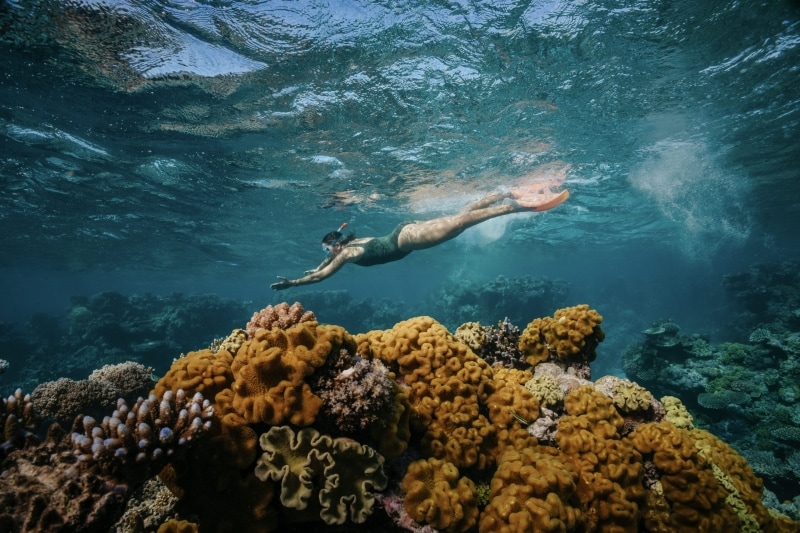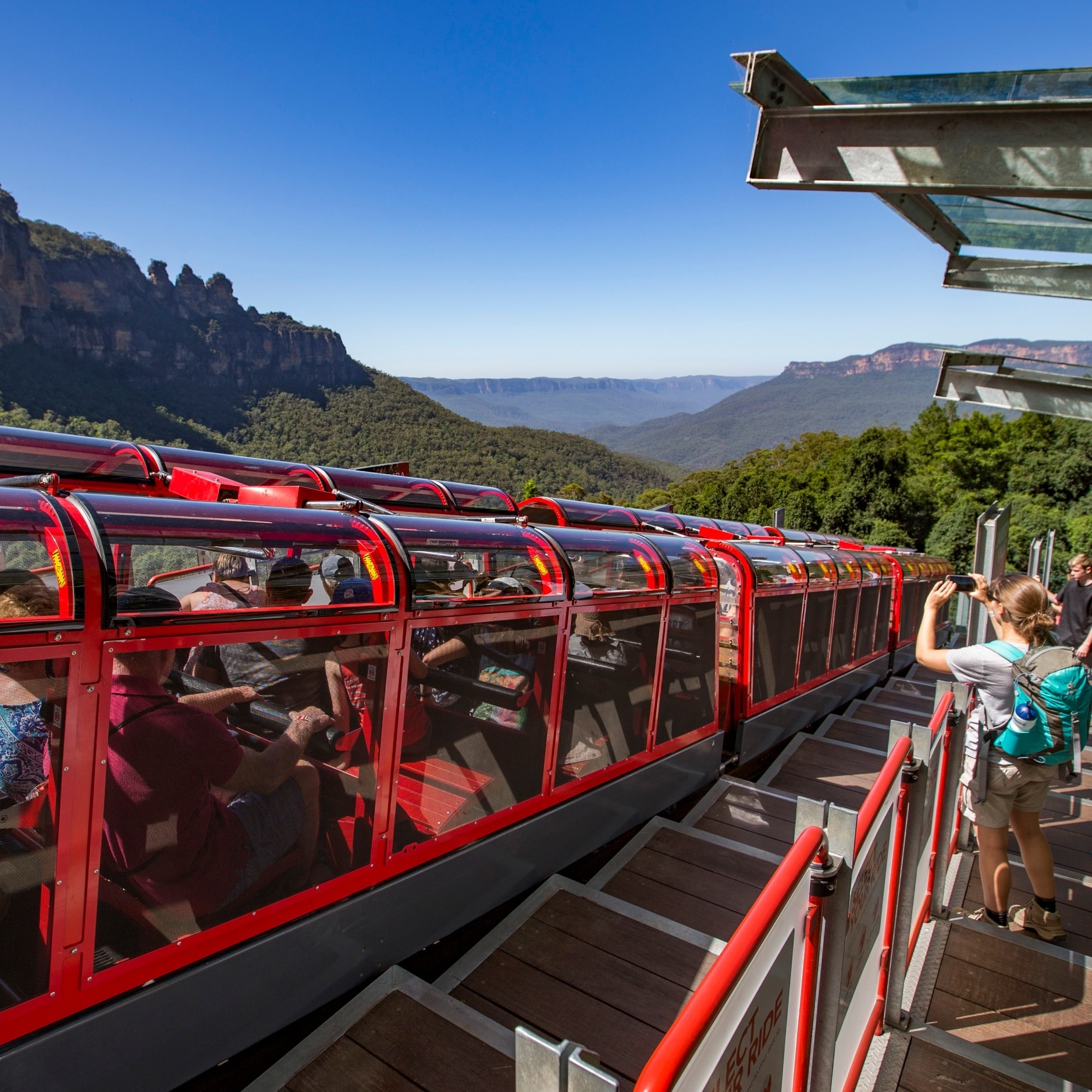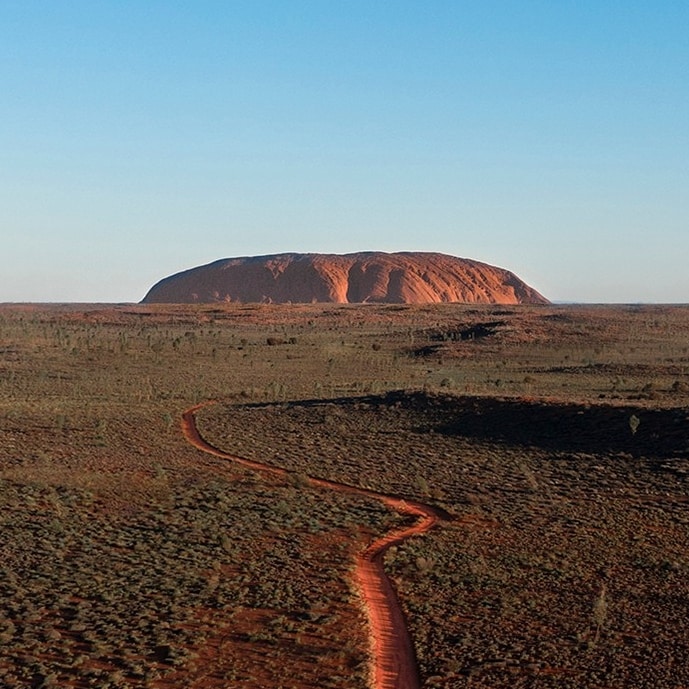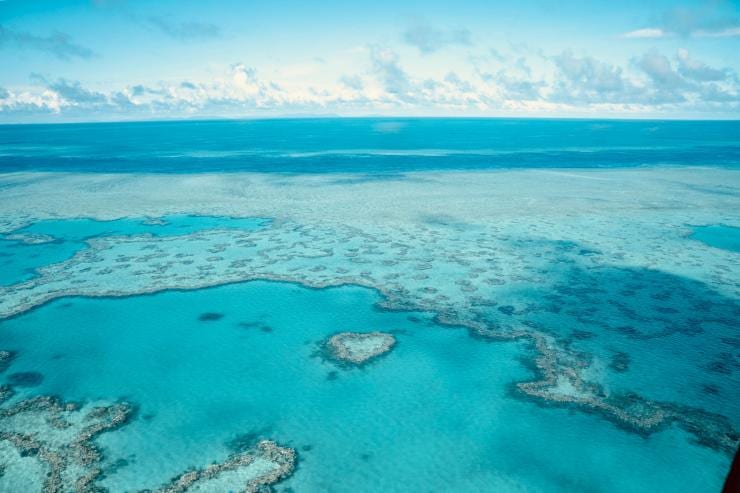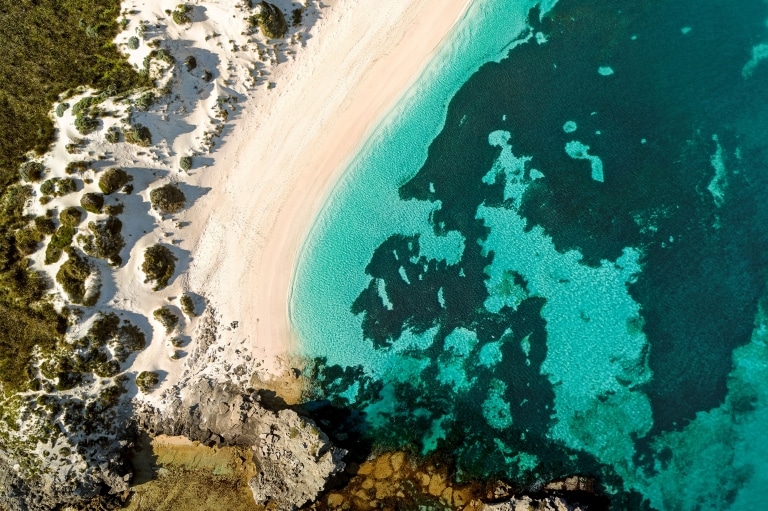
Rottnest Island, Western Australia © Georges Antoni
A nature lover’s guide to Australia
Islands, reefs, red-sand deserts, lush rainforests and more: when it comes to natural wonders, Australia has the lot.
By Allie Metz & Ute Junker
In Australia, getting back to nature is easy. Just head an hour or two out of any city and you can immerse yourself in an unforgettable wilderness experience. It’s not just our famous beaches, bush, and outback, either – you can also explore monsoonal wetlands, cool-climate forests and even alpine mountain ranges. These diverse landscapes are home to an amazing range of unique animals and plants. The only question is, which natural escape will you enjoy first?
The Australian bush

Top tip
The Blue Mountains is home to the steepest passenger railway in the world, Katoomba’s Scenic Railway.
One of Australia’s most distinctive landscapes, “the bush” – native Australian forest – is dominated by tall eucalypts or gum trees, as well as flowering plants like wattles, banksias and waratahs. Right across the country, the bush is a sanctuary for animals such as koalas, wombats and echidnas, and birds such as kookaburras and cockatoos. Plants such as eucalypts have adapted to the bushfires that sometimes sweep through – in fact, many species require fire to stimulate new growth.
The Blue Mountains is a one-million-hectare (3,861-square-mile) wilderness with 140 kilometres (87 miles) of hiking trails. Other highlights include Aboriginal cultural sites, cascading waterfalls and the limestone formations and underground rivers of Jenolan Caves. Also well-known for its hiking trails and Aboriginal rock art is the Grampians, in Victoria. It's also home to fantastic wineries, some in operation since the mid-1800s.
The highest point on the Australian mainland is Mount Kosciuszko at 2228 metres (7310 feet) above sea level. The glacial lakes and alpine ecosystems of the Australian Alps are unique on this arid continent. In the Southern Forests you'll find some of the world’s tallest trees. Karri, jarrah, marri and tingle trees – found nowhere else on Earth – soar up to 70 metres (230 feet) in the sky.
The Australian outback
Approximately 81 per cent of Australia is considered outback (officially classified as rangelands). While the term generally refers to the wild desert heart of the country, the outback actually spans a number of climatic zones. These areas can be as diverse as the arid, red-sand deserts of the Red Centre to the tropical savannas of the Top End in the country's north. Despite covering most of the country, the outback is home to fewer than one million people.
Many people view the outback as a vast expanse of nothingness. Flat terrain of red sand stretching as far as the eye can see. The reality is that the outback is an ancient landscape of mountain ranges, dramatic canyons, sacred Aboriginal sites and desert plains dotted with the mighty monoliths like Uluru and Kata Tjuta and natural amphitheatres like Wilpena Pound.
It's home to an abundance of well-adapted wildlife, including mammals, reptiles and birds. The ancient landscape has also unearthed dinosaur and megafauna fossils as well as the oldest Indigenous remains ever found. Carbon dating showed Mungo Man to be approximately 42,000 years old!
Australia's beaches
Read next
Australia’s most famous natural landmarks
Australia has some of the cleanest waters in the world and, although we might be biased, we reckon we have some of the most beautiful beaches, too. Over 10,000 of them, to be exact. And with more than 80 per cent of the population living either on the coast or within a short distance of it, it's no wonder that beach culture is so prominent here. Many children learn water safety from an early age through the Nippers program, while people of all ages can be spotted having a swim or surf before they start their workday.
From family-friendly bays and coves to internationally-renowned surf breaks, there's a sandy escape for everyone here - including some truly unique beaches everyone should add to their bucket list. The white sands of Whitehaven Beach in the Whitsundays are made of 98 per cent silica, giving them a soft powdery texture so fine it can polish your jewellery. In Tasmania, the bold orange of the lichen-covered granite boulders in the Bay of Fires is a striking contrast to the sapphire blue water. While in Broome you can search for dinosaur footprints in the red rocks of Gantheaume Point near Cable Beach.
Wildlife is also prominent feature of our beaches. Spot sea lions and penguins on our southern shores or catch the sunrise with kangaroos and wallabies along the east coast. You'll see emus cooling off in the waters off Western Australia and turtle hatchlings scampering out to sea in Queensland.
Australia's reefs
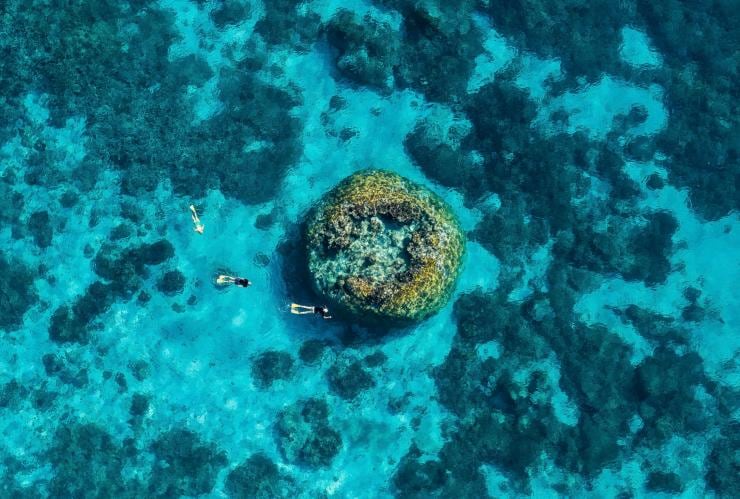
Wilson Island, Queensland © Tourism and Events Queensland
Arguably our most famous natural landmark is the Great Barrier Reef, and it's a must-do for every visitor. It's the largest coral reef system in the world, stretching 2,300 kilometres (1,430 miles) along the Queensland coast all the way to Bundaberg (where it's referred to as the Southern Great Barrier Reef). It's home to nearly 5,000 marine species, including 1,500 species of fish, 30 species of whale and dolphin, 215 bird species and six out of seven sea turtle species. This Unesco World Heritage site can be seen from space, but it's much more exciting to get under the surface of the Coral Sea to explore it up close.
In addition to the Great Barrier Reef, Australia is also home to other reef systems brimming with corals, fish and marine life. Less well-known but just as spectacular is Ningaloo Reef in Western Australia. Located about 1,250 kilometres (777 miles) north of Perth, this World Heritage-listed reef sits just steps from the shore and is famous for offering the chance to swim with whale sharks, but you will also discover colourful corals, turtles and manta rays. In the Kimberley, Montgomery Reef covers nearly 300 square kilometres (116 square miles) across the Indian Ocean. This unique reef actually emerges from the sea at low tide, creating waterfalls from the top of the reef to the sea.
Australian islands
Surrounded by ocean, Australia is often referred to as an island continent. The 8,222 islands scattered along the Australian coast come in all shapes and sizes - from the large island state of Tasmania to tiny islands dotting Sydney Harbour. Some are perfect day-trip material, others are destinations in their own right. Whether you are looking for a luxury escape, a wildlife adventure or a cultural encounter, there’s an island to suit your mood in Australia.
Home to unique native animals and great opportunities for close encounters, Kangaroo, Phillip, Rottnest and K’gari islands all offer the chance to connect with nature on an active and adventurous escape. If privacy, sophisticated dining and creature comforts are high on your priority list, escape to the white sands and emerald waters of Lord Howe, Hamilton, Hayman or Lizard islands.
Rich in Aboriginal culture, a visit to the Tiwi Islands or Torres Strait Islands will reward intrepid travellers with unforgettable experiences. Beyond the fascinating history and culture you'll find incredible fishing adventures, stunning landscapes and a thriving arts scene.
Australia also has a number of large islands in the Pacific, Indian and Southern Oceans and the Coral and Timor Seas as part of its External Territories. Some of the most spectacular include Christmas Island, Cocos (Keeling) Islands and Norfolk Island.
Australia's rainforests

Daintree Tours, Port Douglas, Queensland © Daintree Tours
Soaring trees towering over dappled glens, waterfalls cascading into pools ringed by green lichen-encrusted rocks: Australia’s rainforests are places of wonder. Stretching from the Queensland tropics in the north to Tasmania’s cool-climate forests to the south, they are home to plants and animals found nowhere else on Earth.
With 1200 square kilometres (463 square miles) of growth that extends right down to the coastline, the Daintree Rainforest is the largest rainforest in Australia. It is estimated to be more than 130 million years old, making it the oldest tropical rainforest in the world. It's home to thousands of animal and plant species, including some very rare and remarkable creatures.
The Gondwana Rainforests contain the majority of the world’s remaining Antarctic beeches, the tree that covered Antarctica before it iced over. In Victoria, the Otway Ranges are home to a dense and lush canopy of some of Australia's tallest trees. This diverse landscape is famous for its large population of koalas, but you will also find cascading waterfalls and treetop adventures to keep everyone entertained. The cool-climate rainforest of the Tasmanian Wilderness World Heritage Area is one of just three remaining temperate wilderness areas in the Southern Hemisphere and remains largely untouched. Spot wildlife, explore Aboriginal artefacts and breathe some of the purest air on the planet.

